-
New Graduate Recruitment
MYPAGE/ENTRY
Internship pre-entryPhD/postdoc recruitment
PhD/postdoc recruitment entryMYPAGE
Mypage for FY2026 Graduate Recruitment -
Mid-career Recruitment
Recruitment Infomation
Please check here for
a list of positions currently available.Alumni Network
Chugai provide opportunities for interaction with
Alumnai (graduates) who have worked with us at Chugai in the past.
If you would like to use it, please register here. -
Recruitment of the Disabled
Recruitment of the Disabled site
For candidates in possession of a disability handbook.
INTERVIEW
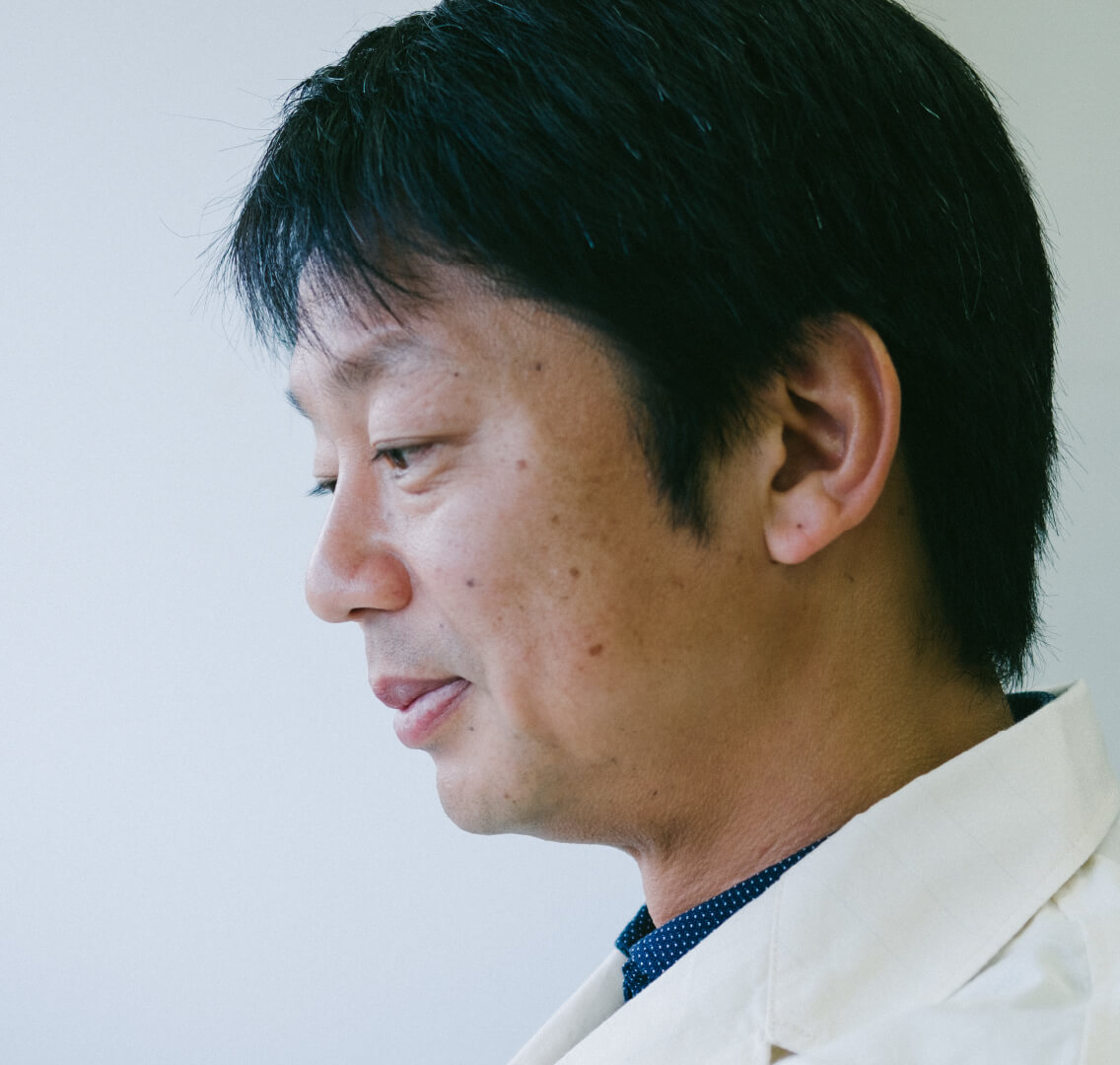
Overcome the limits of drug discovery with a combination of science, craft, and art.
Kazutomo Kinoshita
Research Div. Discovery Chemistry Dept.
Since 1996
Musical composition and
drug discovery are actually very similar.
Kazutomo Kinoshita has always been fond of art and music and has loved creating things with his own hands since he was a child. As a junior high school student, he wanted to become a composer when he grew up. ‘I found it interesting that inspiring music is actually created with elaborate and mathematical musical theory. Since I was already a science-oriented type, I was really into composing music in those days.’ When Kinoshita entered senior high school, he became captivated by chemistry, which prompted an aspiration to make pharmaceuticals. Drugs that save many lives are actually created based on sophisticated theories of chemistry, which he found interesting in a similar way to composing music. He thought that he could make a greater contribution to society by making pharmaceuticals, and from around that time, he set drug discovery up as his great vision in life.

With his aspiration to make pharmaceuticals, Kinoshita enrolled in the faculty of pharmaceutical sciences and majored in drug creation. He then went on to study synthetic organic chemistry in graduate school, before choosing Chugai Pharmaceutical as the place to make his dream comes true. After joining the company, he was assigned to search for low molecular weight compounds that could form the foundation of new drugs. After 10 years as a researcher, he reached a major turning point. ‘Until then, I had been involved in drug discovery for chronic diseases at the Fuji Gotemba Research Laboratories, but I was transferred to the Kamakura Research Laboratories, where I made a fresh start and engaged in drug discovery targeting cancer. Around that time, the existence of abnormal genes that caused the growth of lung cancer cells had just been revealed. We discovered the potential of revolutionary new drugs to treat lung cancer, and our team took on the challenge.’
Drug discovery cannot be achieved with science alone.
In this project, Kinoshita had the experience of a compound that he had been working on being sent out into to the world as a new drug. ‘It is something that any medicinal chemist dreams about, and I am really happy that that dream came true for me. The chances of a compound becoming a new drug is said to be something like 1 in 30,000 or 40,000. I have used up all my lifetime’s supply of good luck (laughs).’ There were a number of factors behind this success, but according to Kinoshita, one of the main reasons was that they were able to use the extensive compound library owned by Roche, Chugai's alliance partner, to search for effective compound candidates. "Serendipity (accidental discovery)", often mentioned in anecdotes about what lies behind scientific progress, was also a feature of this project.
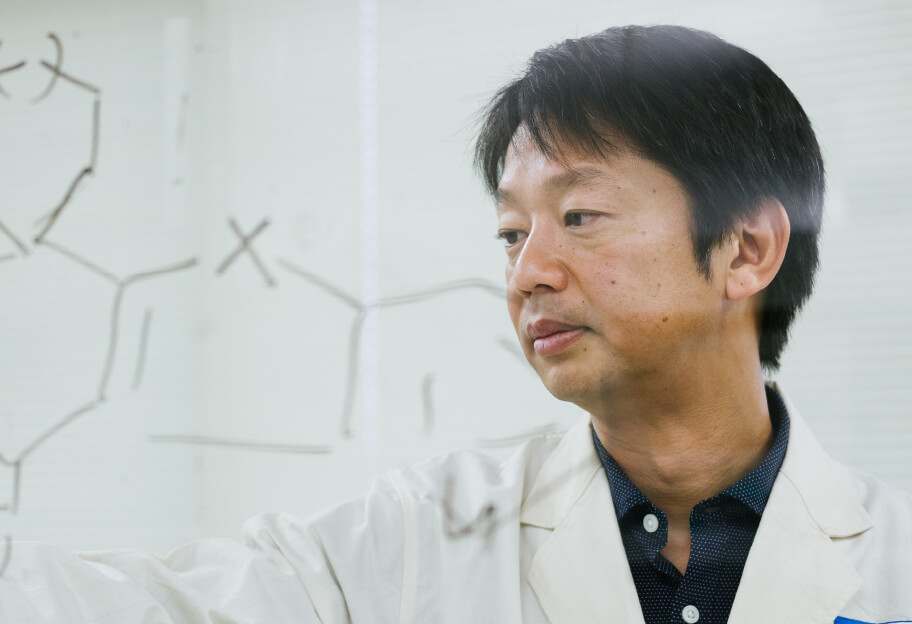
‘When we were verifying promising compounds, a chance happening enabled the compound to aim only for the targets we wanted it to act on, and the possibility of developing a new drug suddenly increased. It was a totally unexpected event, and there was an element of good fortune as well, but our excellent team members did not miss it and investigated the phenomenon. That is exactly how the power of the team was able to achieve the drug discovery.’ The new drug created by Kinoshita’s team brought a revolution to the treatment of lung cancer and has helped many patients. This achievement attracted a great deal of attention in academic circles, and they were given the opportunity to present at academic conferences overseas. Through the experience of this series of drug discovery processes, Kinoshita came to hold a new belief. That was that “drug discovery cannot be achieved with science alone.”
From then on,
his methodology of drug discovery itself changed.
As Kinoshita recounts, ‘No matter how well you construct a theory in your head, you cannot verify it unless you give it form as a compound. Even if a compound is synthesized with the same method, its reproducibility may vary from person to person. That is why you must equip yourself with “craft,” namely, the craftsmanship with which you can achieve perfect reproduction at any time. Moreover, as long as you do the same things as before, there will be no serendipity. Unexpected discoveries are born precisely because you approach them with outlandish ideas. I think this is where you also need an “artistic” sensibility.’ Kinoshita feels that the artistic sensibility he cultivated through his devotion to composing music in his school days, has actually become one of his strengths as a researcher. Now, Kinoshita strives to develop completely new drug discovery technologies, making full use of these three factors.
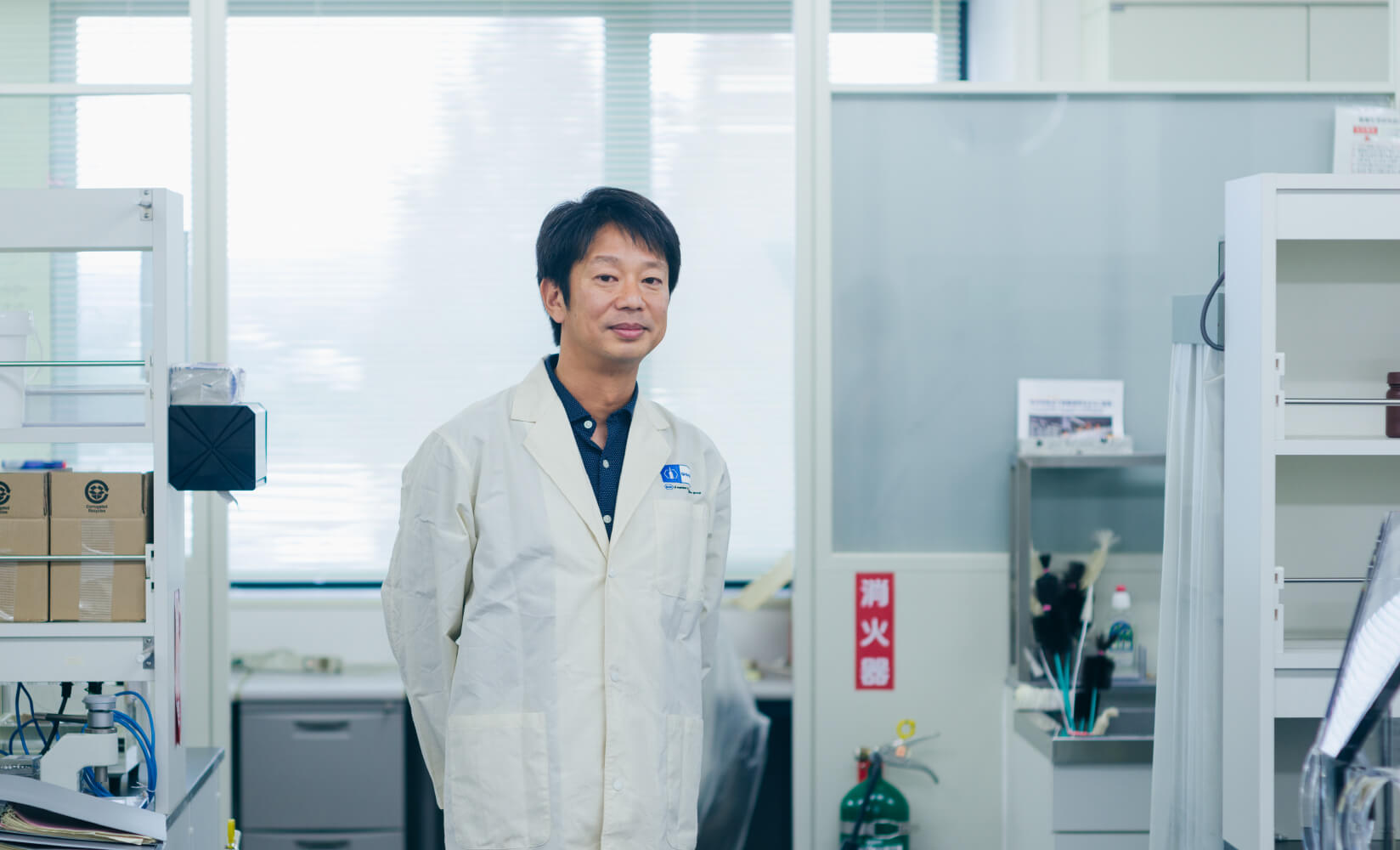
Kinoshita says that the world of drug discovery is about to enter an era of great change. ‘Until now, there has always been a reasonable number of targets for drug discovery available, but in the past 20 years or so, most of those have been captured. There are, however, still some remaining targets that cannot be captured by conventional methods, that is, intractable diseases. So, I am now leading a project to innovate from those methodologies and break through the limitations of drug discovery.’ To produce drugs using unprecedented methods, unprecedented ideas are needed more than ever before. It is really the domain of “art.” Through this challenge, Kinoshita will devote the rest of his career as a researcher to astounding drug discovery researchers around the world and to bringing new mechanisms of drug discovery for the sake of patients to the world.
*The contents of this article, and the divisions that the people featured in this article belonged to and the names of those divisions are current as of the time of the interview.
Other employees in research positions
-
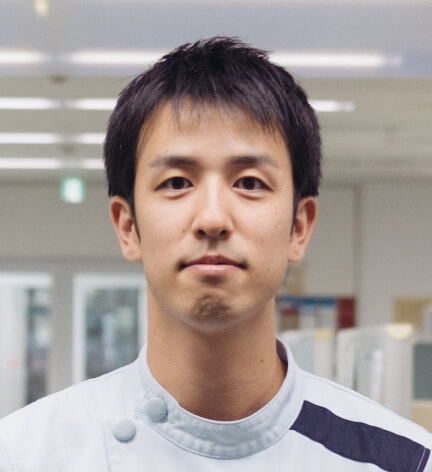
Kazuki Yamaguchi
Research Div.
Discovery Pharmacology Dept.
Since 2014 -
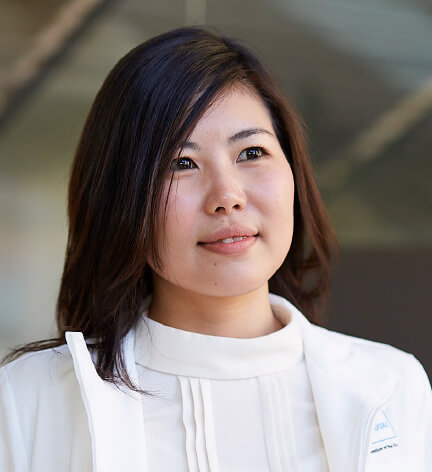
Cheauyuaan Tan
Research Div.
Discovery Biologics Dept.
Since 2015 -
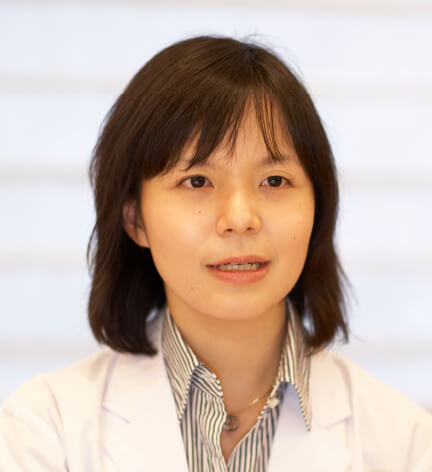
Misato Hashizume
Medical Affairs Div.
Product Research Dept.
Since 2007 -
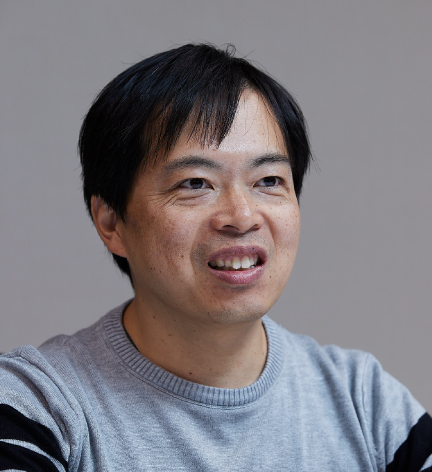
Reiji Teramoto
Research Div.
Discovery Technology Dept.
Since 2010 -
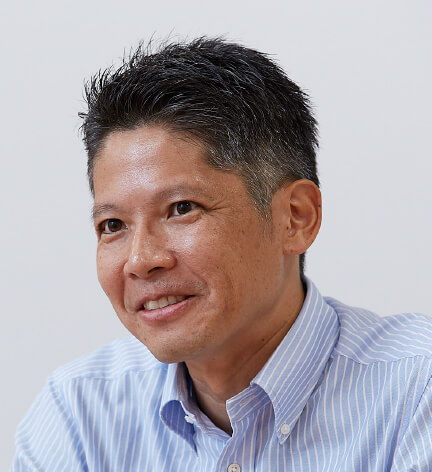
Yuichiro Shimizu
Chugai Pharmabody
Research Pte. Ltd.
Since 2010 -
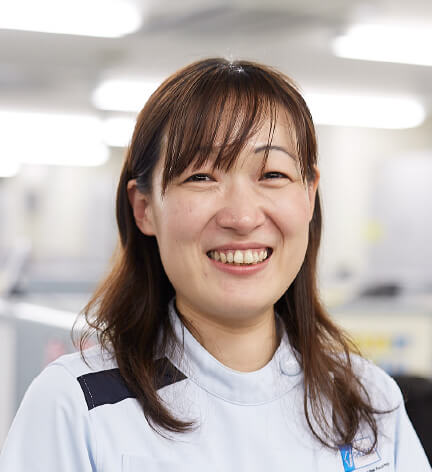
Junko Taketo
Research Div.
Safety Assessment Dept.
Since 2006 -
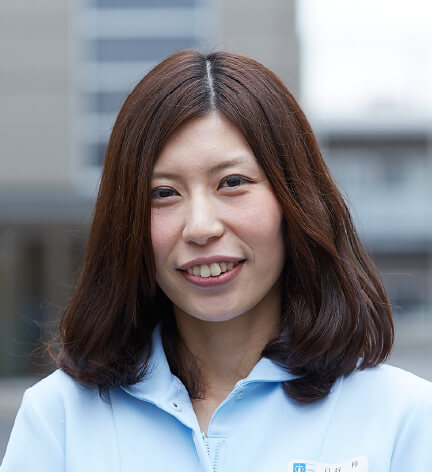
Azusa Toya
Pharmaceutical Technology Div.
API Process Development Dept.
Since 2013 -
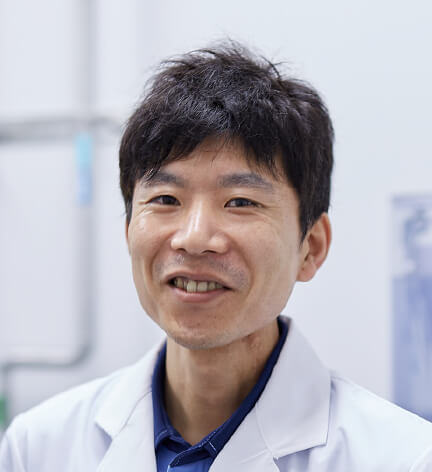
Yuuki Kojima
Pharmaceutical Technology Div.
Production Engineering Dept.
Since 2006
